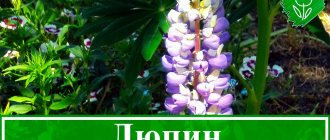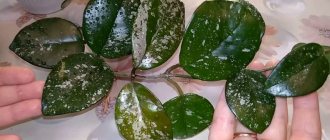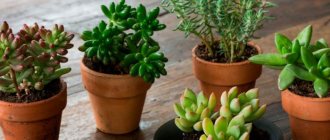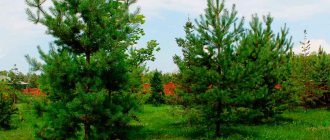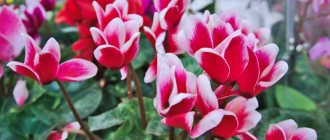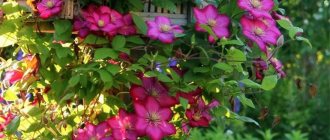Caring for the Robelena date at home
This date in culture is considered the most spectacular and beautiful, as well as very capricious. To grow it indoors, you must follow certain rules.
Illumination
This plant does not provide any special requirements for lighting. So, it grows quite well in both partial shade and sunny places. However, the room should not be darker than 3000 lux, otherwise the development and growth of the date will be inhibited.
Experienced gardeners recommend choosing the most illuminated place for this plant in the immediate vicinity of the window opening; if this is not possible, then you can use phytolamps. In order for the crown to be spectacular and beautiful, the pot with the plant should be systematically rotated little by little around its axis (with different sides towards the light source).
Temperature
In summer, it needs moderate temperatures from 20 to 25 degrees. With the onset of winter, the date can be moved to a cooler place from 15 to 18 degrees. At the same time, we should not forget that this species, unlike others, loves warmth very much, and cold air can cause irreparable harm to it. In this regard, in winter, provide the plant with protection from drafts. But we should not forget that placing a palm tree near heating appliances in winter is also prohibited.
How to water
In the spring and summer, the plant should be watered regularly and abundantly, but overwatering should not be allowed. The fact is that such a palm tree has an extremely weak root system, which is susceptible to rotting. Experts recommend watering only after the substrate has dried to a depth of about 2 or 3 centimeters, which can easily be checked with your finger.
In winter, the plant needs to be watered somewhat less, especially during cool winters.
Air humidity
A species such as the Robelena date feels normal only at high air humidity. Spraying should be carried out twice a day in the morning and evening and boiled lukewarm water should be used for this. In the event that the tips of the leaves begin to dry even with regular moistening, you will have to get a humidifier.
If possible, give the palm tree a warm shower.
Trimming
This plant does not need pruning, but sometimes it may be necessary to cut off a diseased or old leaf. When working with such a palm tree, do not forget about its natural protection, presented in the form of a long and fairly sharp thorn, which is located at the base of the petiole. In this regard, you need to be very careful when working with such a plant.
Earth mixture
You can make the earth mixture with your own hands. Combine light clay-turf, peat and humus-leaf soil, as well as rotted manure and coarse sand, taken in a ratio of 2:1:2:1:1. As a last resort, you can purchase a ready-made mixture for palm trees in a special store. However, it contains few nutrients, so it will have to be changed frequently.
Don’t forget to make a good drainage layer at the bottom of the container to prevent liquid from stagnating in the substrate. To prevent a large plant from turning the pot over, weights are placed on its bottom during replanting.
Fertilizer
It is necessary to feed the palm tree once every 2–3 weeks in the spring and summer. To do this, use complex liquid fertilizer for palm trees. In winter, fertilizers cannot be applied to the soil.
Features of transplantation
Dates should only be replanted if absolutely necessary, for example, when the roots no longer fit into the container. This procedure must be carried out with extreme caution, because the root system of such a plant is weak and rather fragile, and damage to it harms the palm tree itself. Ideally, when transplanting, the earthen lump should remain intact and unharmed.
Experienced gardeners advise changing the top layer of the substrate once a year. To do this, carefully remove the top layer of soil (as deep as possible), and then pour fresh soil mixture into the pot.
Under no circumstances should young plants be replanted in the autumn, as this may cause their death.
Reproduction methods
It can be grown from a seed, but a sufficiently large specimen will only be obtained after several years, because this palm tree is distinguished by its slow growth.
Pests and diseases
Spider mites, mealybugs, scale insects or aphids can settle on the plant. Once pests are detected, treatment with special insecticides of appropriate action will be required.
A date can get sick due to violations of the rules of care. Often the tips of its leaves begin to dry out due to low air humidity.
Features of cultivation
It is often recommended to plant several specimens of the Robelen date in one pot, and they should be placed very close to each other. It happens that the trunks are closely intertwined with each other, and because of this it may seem that the date is branching. In this regard, there are sources that contain information that this plant can be multi-stemmed, but this is not the case.
Types of date trees - Phoenix palms
Melon tree - what fruits it produces and where it grows
Modern technologies for growing date palms make it possible to collect from 70 to 200 kg of fruit per season from one tree over 4-8 years old. Trees with a female flower structure bear fruit. The plantations are dominated by female type trees. Male trees are grown separately, from which pollen is collected, and then female trees are pollinated by hand.
Where trees are grown, date honey is obtained. Jams and preserves are prepared from fresh fruits; dates are mainly sold in the form of dried fruits. There are also sun-dried pitted dates - what these products are is well known to culinary specialists. They are used for baking confectionery, preparing desserts and drinks.
How much sugar is in dried dates with pits can be judged by the description of the energy value of the product. The calorie content of one date weighing 8-9 g is 23 kcal. The fruit contains 0.03 g of fat, 6.23 g of carbohydrates (of which 5.26 g of sugar, 0.7 g of fiber), 0.2 g of protein.
To grow crops on an industrial scale, several types of palm trees are used, on which fruits grow that differ in shape and degree of softness when ripe. Dates can be oval, ovoid or elongated in shape.
Oval date fruits
According to their ripe softness, dates are:
- Dry, with fruit moisture content less than 18%.
- Semi-dry - humidity 18-20%.
- Soft - humidity 20-23%.
The degree of maturity of dates is indicated by the following terms:
- milky ripeness - harak (hard, dry fruits);
- ripe ones - rotab (have a soft delicate structure).
Note! Dates are recommended to be consumed with caution by diabetics, pregnant and lactating women.
In cold climates, date trees are grown in greenhouses and as houseplants.
Dried dates
Palm date (Phoenix dactylifera)
It is one of the most popular and highly productive tree species. Phoenix dactylifera varieties differ in the quality and properties of their fruits:
- soft dates are collected from trees of the Halawy, Khadrawy, Medjool, Barhee varieties;
- varieties Dayri, Zahidi, Deglet Noor bear semi-dry berries;
- The Thoory variety produces dry fruits when ripe.
The most common varieties of the Phoenix dactylifera species growing in open ground include Zahidi, Medjool, Deglet Noor.
Phoenix dactylifera plantation
The Deglet Noor variety has the advantage of light, honey-tasting berries. The name of the variety translated from Arabic means “finger of the Universe.”
Trees of the Medjool variety have a beautiful appearance, under favorable conditions they can grow to a height of 30 m. These palms develop a lush crown of silver-green foliage.
Palm trees of the Zahidi variety are slightly inferior in decorativeness to trees of the Medjool variety, but have high productivity and fruits of fairly good quality.
Canary date (Phoenix canariensis)
The tree owes its name to its main habitat - the Canary Islands. In nature it grows up to 15 m. Its orange-yellow small fruits are not used for food. One of the varieties of the Canary palm, Luxor, has gained fame as the most common indoor tree. The plant at a young age is a shrub that has grown greatly in width, growing a trunk as it grows. It has thin leaves with pointed tips up to 4 m long, which can injure the skin.
The Canary date at home requires some care. The tree should grow with high air humidity in a place well and evenly illuminated by the sun. If such a place cannot be found, then the container with the plant is periodically turned in different directions towards the light, and devices are either installed nearby that increase the humidity level, or manual spraying is carried out as often as possible.
Phoenix canariensis
Robelini date (Phoenix roebelenii)
The miniature, slowly growing palm tree Phoenix roebelenii does not grow higher than 3 m in height and has a wide crown. The lamellar leaves, up to 1.2 m long, are colored gray-green and covered with a fluffy coating on the inside. Used for landscaping large office premises, feels good on insulated loggias. They are grown at home, in winter gardens, and in greenhouses.
The dwarf tree, sometimes called the robelena date, can withstand partial shade and temperatures as low as -3 degrees. Botanists decided to name this type of palm tree in honor of Karl Roebelen, who at the beginning of the 20th century became famous because of his collection of orchids.
Note! NASA Clean Air research has found that Phoenix roebelenii effectively fights household toxins and removes benzene and formaldehyde from the air.
General information and description
The natural habitat of the robelena date is the humid forests of Southern China, India and Laos. Here, most of the time, the humidity level is elevated and the soils remain moist.
The plant has natural beauty, it grows in the form of a 2-3 meter tree. The trunk is straight, thin, its surface is bumpy at the bottom. The top of the trunk is crowned with a lush bunch of openwork foliage. Initially, the foliage covers the entire stem, but over time the blades fall off, remaining only on the crown
The length of the leaves can vary from 50 cm to 100 cm, the color is dark green, shimmering with silver. In young specimens, the leaf blades are covered with a powdery whitish coating.
The timid date blooms with small yellow flowers. The fruits of the palm are edible, oval, black. But despite the fact that they can be eaten, they do not have any special taste - these tiny, no more than 10 mm in length, fruits have an unpleasant taste.
This is interesting! The robelini palm has been awarded the Royal Horticultural Society's annual prize. And it is obtained from cultivated plants that have shown themselves to be excellent during practical tests and have a number of positive qualities: they are easy to purchase, easy to grow, they are highly decorative and have good health. Actually, robelini meets all of the above requirements.
Description and characteristics of the Robelini date
The dwarf date palm in nature will grow to a maximum of 3 meters. The cultivated species of the plant is even more miniature in size, rarely exceeding 1.5 meters in height.
The trunk of the palm tree is smooth and thin. The tree trunk acquired its unusual appearance thanks to the dead leaves of the plant, which left marks on it. The leaves are thin, feathery and elongated, arched. Young leaves have a powdery whitish coating. In an adult crop, the color of the foliage depends on the lighting.
If the date is in the open sun, the leaves acquire a silvery tint; indoors they are dark green. Mature date palms bear fruit after flowering, and the elongated fruits are eaten.
Important! The dwarf palm begins to bloom in the 10th year of growth. For a plant to bear fruit, it needs cross-pollination. .
Where to put
– The lighting should be light, although the Robelena date can grow in any conditions, but it will feel better with diffused light.
– There is a wide range of temperatures, and this palm can tolerate any temperature. But in winter, the temperature in the room with the Robelena date should be above 10 degrees.
– Humidity should be high, this will create conditions for good growth. Therefore, we regularly spray and wipe the leaves from dust. You can use special humidifiers. Spray the plant regularly with warm water.
You can read more about proper care of palm trees here.
History of the date palm
Archaeological finds indicate that a tree called the Phoenix palm and edible dates were used by people who lived as far back as the Neolithic era.
Important! Thanks to trees growing in oases among the sands, it became possible for people to survive in desert climates.
In the shade of date palms, other edible plants grew, which were cultivated by the local population and were included in the list of agricultural crops.
Date palm blossom
Palm date trees had a cult significance in many countries:
- In ancient Egypt, palm leaves were a symbol of the sacred Phoenix bird and were used to wrap mummies.
- Israel celebrated the end of the date harvest.
- The symbol of the biblical Christ was originally palm branches.
- The Greeks at the Olympic Games honored the winners with palm branches.
- In Islam, when completing the Ramadan fast, a Muslim eats 3 dates.
Ancient people believed that a palm tree, regardless of circumstances, always grows straight and therefore its branch is rightfully a sign of courage and perseverance.
Ancient Egyptian images of date palms
Location and temperature
The date palm should be located in a sunny place in summer, but protected from direct wind (this is important when the plant is placed outside). If the plant is kept indoors all year round, then during the growing season it should stand in a bright place, but not directly in the sun. It is best to place the pot with it at a distance of 0.5-2 meters from the window.
Feeding young and adult palm trees
When transplanted, young palm trees receive nutritious soil, so they do not need fertilizing during the first 2-3 months after taking root in a new place. But, since they quickly form the root system, leaves and stems, without subsequent regular application of fertilizers they can stop their development.
Date trees begin to be fed in early spring and continue throughout the summer. The frequency of fertilizing depends on the age of the plant. Young palm trees are watered with fertilizer solutions every 2 weeks, trees older than 5 years - once a month. During the period of autumn-winter dormancy, trees are rarely watered and fed no more than once every 3 months.
Date palm seedlings with a beautiful bouquet of leaves on the tops of the trunks
How to water
– Sufficient watering is needed, but if the room is cool and shade prevails, water more abundantly, but we try not to overwater, but to maintain moist soil in the pot.
– Feeding is applied at the moment when young leaves form on the plant, and we begin to feed the palm tree. You can use liquid fertilizers specifically for palm trees. There is no need to feed the palm tree in winter.
Date palm care at home
Orange tree at home - Washington Navel orange
Date palms are grown at home if it is possible to provide the plants with optimal growth conditions and proper care.
Adult plants need to be provided with:
- a room with an air temperature in summer up to +30-35, in winter within +12-18 degrees;
- bright sunlight in summer, with shading at midday, and sufficient illumination in winter;
- air humidity level of at least 70%;
- regular watering with soft water;
- fertile soil and fertilizing;
- volumetric planting containers in which drainage holes are made.
Indoor Date palms are grown from ready-made seedlings, which can be purchased at flower shops or from seeds. Until 5 years of age, young plants are replanted annually, and then regularly partially replace the soil.
Palm tree indoors
Gallery
Inflorescence
Fruit
Flowers (male)
Date palm, also Phoenix, Date (lat. Phoenix) is a genus of plants of the Palm family (Arecaceae). The genus includes 14 to 17 species of palms from Africa and Eurasia.
The fruits of some species of this genus, especially the species Phoenix dactylifera, dates, are a common food product.
The date palm was grown back in the 4th millennium BC. e. in Mesopotamia, on the territory of which modern Iraq is located. In the Ancient Near East, the date palm (Akkadian gishimaru) was the standard of beauty.
Clean Air is a study conducted by the National Aeronautics and Space Administration (NASA) in collaboration with the Associated Landscape Contractors of America (ALCA). The results of this work showed that some common indoor plants, in combination with activated carbon as a substrate, help to naturally purify the air of a number of substances toxic to humans, such as benzene, formaldehyde and trichlorethylene, helping to neutralize city dweller syndrome.
The first list of air-purifying plants was compiled by NASA published in 1989, which was aimed at purifying the air in the confined environments of space stations. Plants from the first list, in addition to absorbing carbon dioxide and releasing oxygen (a common property of all plants associated with gas exchange during photosynthesis), also eliminated significant amounts of benzene, formaldehyde and trichlorethylene. The second and third lists were compiled later by B. S. Wolverton in a book and article. They provide information about plants that eliminate more specific chemicals from the air.
NASA researchers suggest that effective air purification can be achieved with at least one plant per 100 square feet of home or office space. While the original study only looked at plants grown hydroponically (i.e. without soil), later studies showed that microorganisms in a potting mix were able to remove benzene from the air. Certain plant species also make some contribution to benzene removal.
Reproduction at home
Robelini can be propagated by seed or by separating daughter specimens from the main palm. However, dwarf date babies are a rare occurrence, and besides, they can only be separated if they have their own roots.
Initially, the children are placed in a greenhouse with high air humidity and the soil is regularly irrigated so that it always remains slightly moist. When young plants enter the active growth phase, they should be accustomed to the open air. They care for juveniles in the same way as for adult dates.
Growing a robelini palm from seed is difficult as it will take at least 10 weeks to germinate. In addition, the seeds must be fresh and kept in a warm, moist soil mixture during germination. It is surprising that planted seeds can hatch 10-12 months after planting.
Sown robelini grows extremely slowly; in the first two to three years, the plant develops regular lanceolate foliage, which later gives way to characteristic pinnate foliage.
This is interesting! Sometimes in floriculture there is information about multi-stemmed dates, however, it is unreliable - all varieties of these palm trees have only one trunk. As a rule, date “multi-stem” is the work of human hands, when the owner plants several trees in one container, placing the trunks close to each other. Despite the fact that the multi-stemmed robelini is only an illusion, it looks quite impressive.
Pests and diseases
– Pests that can cause great harm are spider mites, scale insects and felt insects. To prevent the appearance of spider mites, we constantly inspect the plant and carry out regular spraying. We use appropriate drugs to combat these pests.
– Diseases are mainly associated with leaves, as well as with the root system. Drafts or temperature changes can result in the appearance of brown spots on the leaves; their appearance is facilitated by low air humidity or poor drainage. We provide economical watering, move it to a warmer place and increase air humidity.
You can read more about diseases and pests here.
Difficulties in growing robelini dates
Like other palm trees, robelen is an exotic plant, accustomed to a different climate, significantly different from residential conditions. And despite its high adaptability, the date can suffer from poor maintenance and improper care. A florist may encounter the following symptoms:
- The appearance of brown dots on the foliage means the palm tree does not have enough light; you should place the pot closer to the window or provide additional lighting.
- Darkening and drying of the tips of the leaf blades - the air in the room is too dry, you need to humidify it or spray the crown of the plant with water at room temperature.
- The color of the foliage has lightened, it has acquired a whitish tint - the palm has infested with mites, which leave tiny wounds on the blades. The foliage should be wiped with a damp sponge, the room should be ventilated daily. In case of more significant infection, the date is treated with acaricides that eliminate pests.
Possible problems
If the tree has stopped growing or has lost its healthy appearance, then you may be faced with the following problems:
- Brown leaves on a palm tree indicate severe sunburn.
- If the tree has stopped growing, this means a lack of nutrients, low air temperature or increased acidity in the soil.
- Drafts cause leaves to fall.
- Yellow leaves on the plant indicate insufficient humidity or the palm tree is reacting to hard water.
- Drooping leaves indicate low air humidity.
By devoting a little time to caring for your date palm and providing it with the necessary growth conditions, you will get a beautiful and unusual decoration for your garden or greenhouse.
Flower design
From a design point of view, this palm tree does not need separate decoration. You can use additional lighting to highlight the beauty of the leaves. The Robelena date is a solitary plant and does not need to be supplemented with other indoor plants. The only condition is to choose a decent pot or flowerpot that will highlight the greatness of this palm tree and fit perfectly into the interior of your home. This palm is very often confused with the palmate date. Good luck to you.
Loading…
Difficulties in growing
As with growing other plants, some problems may arise with Robelini:
The Robelena date has very fragile roots that can be easily broken, so it does not like to be transplanted. The tree is replanted only if the previous pot has become small and there is not enough space for the roots.
The Robelini date palm does not like to be transplanted because it has fragile roots.
Transplantation must be carried out in a transshipment manner, taking care not to destroy the clod of earth that protects the roots from breakage. The main rule is not to replant the plant in the autumn, otherwise it may die.
Breeding methods
The Robelena date is grown in several ways.
Propagation by seeds is a long-term method of growing a new plant. From the planted seeds, the first shoots appear after 3-5 years. For propagation, daughter shoots are separated from the palm tree, which, after being kept in greenhouse conditions, can be safely planted in the soil.
